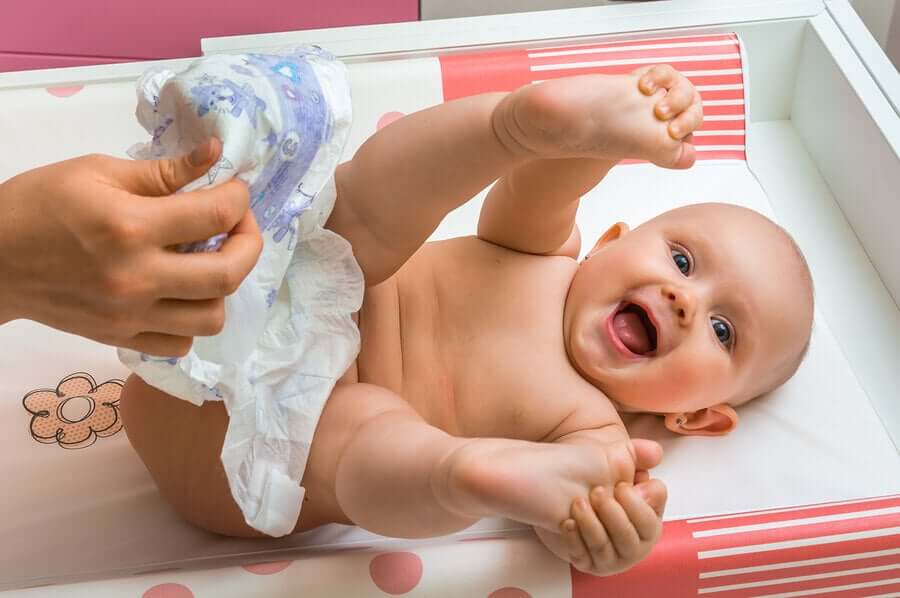Impetigo in Children: Types, Symptoms and Treatment

Impetigo in children is one of the most common skin illnesses. It generally appears during the summer season and can spread to anyone. However, children are most vulnerable to it.
How is this illness diagnosed and what does treatment involve? Find the answers below.
What is impetigo?
Impetigo in children is a bacterial infection that produces swelling on the surface of the skin. The bacteria that cause this illness are streptococcus and staphylococci.
Children are more prone to suffering from impetigo given that it develops easily in irritated skin, such as in diaper rash. Children may also develop impetigo in relation to insect bites, eczema, scrapes, or poison oak, ivy or sumac.
At the same time, this infection is more likely to occur in the summer given the typical seasonal heat. What’s more, kids tend to spend time in the pool during the summer which exposes them to increased humidity and chlorine. This causes damage to the epidermis which, in turn, produces impetigo.
Impetigo is highly contagious by direct contact. It can also spread very easily by touching objects that have been in touch with infected skin. The risk of catching impetigo is higher in children with suppressed immune systems or with other skin conditions like eczema.
Types of impetigo
There are three types of impetigo in children, although the most frequent types don’t produce blisters.
Nonbullous impetigo
This infection, unlike bullous impetigo, is caused by both streptococcus (“strep”) or staphylococci (staph) bacterias. The main symptom of this infection is the erosion of the skin that looks like skin-colored scabs.
Sometimes a red circle appears around the skin lesions. The spots release a yellowy liquid that forms a soft and sticky yellow scab. It can become complicated in patients who suffer illnesses like diabetes and cancer.
Bullous impetigo
This type of impetigo in children is caused only by the bacteria streptococcus aureus. It usually produces brown colored blisters, without erythema, on a child’s torso and extremities. These blisters burst easily given that the skin over them is very thin.
Ecthyma
In this case, impetigo takes on the aspect of perforated ulcers. Yellowy scabs with red border appear, which produce pain and itching. The infection can last for days or even weeks. When the ulcers burst, they form a honey-colored scab around the wound.
How to diagnose impetigo: Signs and symptoms
In general, doctors diagnose impetigo based on its appearance. However, in some cases, they may need to extract a small sample of fluid from the blisters or bumps.
This infection can produce lesions on any part of the body. However, the areas that tend to suffer the most are the nose, mouth, forearms and diaper region.
Another symptom of impetigo is extreme itchiness around the blisters and sometimes pain and burning.
Treatment of impetigo in children
As impetigo is a bacterial infection, the correct course of treatment is through antibiotics as well as emollient and anti-inflammatory creams. Your child’s pediatrician should prescribe these treatments.
If the infection is affecting reduced areas of the skin, a doctor may only prescribe topical creams. If your little one doesn’t show improvement after three days of treatment, or develops a fever, you should return to the doctor.
Furthermore, while your child is in treatment, you should wash the affected areas gently with warm water daily. Use antiseptic soap and clean gauze. Wash your little one’s nails and avoid scratching so that the infection doesn’t spread.
If the pediatrician recommends it, cover the infected areas with gauze or bandage. Also, make sure the bandage remains clean and not too tight. Atopic patients should maintain proper hydration of the skin in order to restore the barrier function of their skin.

Prevention of impetigo in children
The main way to prevent this type of infection is through hygiene habits.
- Wash hands regularly.
- Make sure your little one always uses enough soap and water.
- Pay attention to areas of the skin that have scrapes, cuts, bites or rashes.
- If a member of the family has impetigo, avoid direct contact. Use antibacterial soap and make sure that each family member uses a separate towel.
If you notice that your child has symptoms of impetigo, don’t delay in seeking medical attention. Remember to follow the doctor’s recommendations to avoid further spreading of the infection.
Impetigo in children is one of the most common skin illnesses. It generally appears during the summer season and can spread to anyone. However, children are most vulnerable to it.
How is this illness diagnosed and what does treatment involve? Find the answers below.
What is impetigo?
Impetigo in children is a bacterial infection that produces swelling on the surface of the skin. The bacteria that cause this illness are streptococcus and staphylococci.
Children are more prone to suffering from impetigo given that it develops easily in irritated skin, such as in diaper rash. Children may also develop impetigo in relation to insect bites, eczema, scrapes, or poison oak, ivy or sumac.
At the same time, this infection is more likely to occur in the summer given the typical seasonal heat. What’s more, kids tend to spend time in the pool during the summer which exposes them to increased humidity and chlorine. This causes damage to the epidermis which, in turn, produces impetigo.
Impetigo is highly contagious by direct contact. It can also spread very easily by touching objects that have been in touch with infected skin. The risk of catching impetigo is higher in children with suppressed immune systems or with other skin conditions like eczema.
Types of impetigo
There are three types of impetigo in children, although the most frequent types don’t produce blisters.
Nonbullous impetigo
This infection, unlike bullous impetigo, is caused by both streptococcus (“strep”) or staphylococci (staph) bacterias. The main symptom of this infection is the erosion of the skin that looks like skin-colored scabs.
Sometimes a red circle appears around the skin lesions. The spots release a yellowy liquid that forms a soft and sticky yellow scab. It can become complicated in patients who suffer illnesses like diabetes and cancer.
Bullous impetigo
This type of impetigo in children is caused only by the bacteria streptococcus aureus. It usually produces brown colored blisters, without erythema, on a child’s torso and extremities. These blisters burst easily given that the skin over them is very thin.
Ecthyma
In this case, impetigo takes on the aspect of perforated ulcers. Yellowy scabs with red border appear, which produce pain and itching. The infection can last for days or even weeks. When the ulcers burst, they form a honey-colored scab around the wound.
How to diagnose impetigo: Signs and symptoms
In general, doctors diagnose impetigo based on its appearance. However, in some cases, they may need to extract a small sample of fluid from the blisters or bumps.
This infection can produce lesions on any part of the body. However, the areas that tend to suffer the most are the nose, mouth, forearms and diaper region.
Another symptom of impetigo is extreme itchiness around the blisters and sometimes pain and burning.
Treatment of impetigo in children
As impetigo is a bacterial infection, the correct course of treatment is through antibiotics as well as emollient and anti-inflammatory creams. Your child’s pediatrician should prescribe these treatments.
If the infection is affecting reduced areas of the skin, a doctor may only prescribe topical creams. If your little one doesn’t show improvement after three days of treatment, or develops a fever, you should return to the doctor.
Furthermore, while your child is in treatment, you should wash the affected areas gently with warm water daily. Use antiseptic soap and clean gauze. Wash your little one’s nails and avoid scratching so that the infection doesn’t spread.
If the pediatrician recommends it, cover the infected areas with gauze or bandage. Also, make sure the bandage remains clean and not too tight. Atopic patients should maintain proper hydration of the skin in order to restore the barrier function of their skin.

Prevention of impetigo in children
The main way to prevent this type of infection is through hygiene habits.
- Wash hands regularly.
- Make sure your little one always uses enough soap and water.
- Pay attention to areas of the skin that have scrapes, cuts, bites or rashes.
- If a member of the family has impetigo, avoid direct contact. Use antibacterial soap and make sure that each family member uses a separate towel.
If you notice that your child has symptoms of impetigo, don’t delay in seeking medical attention. Remember to follow the doctor’s recommendations to avoid further spreading of the infection.
All cited sources were thoroughly reviewed by our team to ensure their quality, reliability, currency, and validity. The bibliography of this article was considered reliable and of academic or scientific accuracy.
- Fernández, M. Á. B. (2016). Impétigo ampolloso. FMC Formacion Medica Continuada En Atencion Primaria. https://doi.org/10.1016/j.fmc.2015.01.017
- Fonseca Capdevila E. Infecciones bacterianas. En: Ferrándiz, C., ed. Dermatología Clínica. 3ª edición. Elsevier, Barcelona 2009; p. 23-35
- Mazereeuw-Hautier, J. (2006). Impétigo. Annales de Dermatologie et de Venereologie. https://doi.org/10.1016/S0151-9638(06)70877-8
This text is provided for informational purposes only and does not replace consultation with a professional. If in doubt, consult your specialist.








